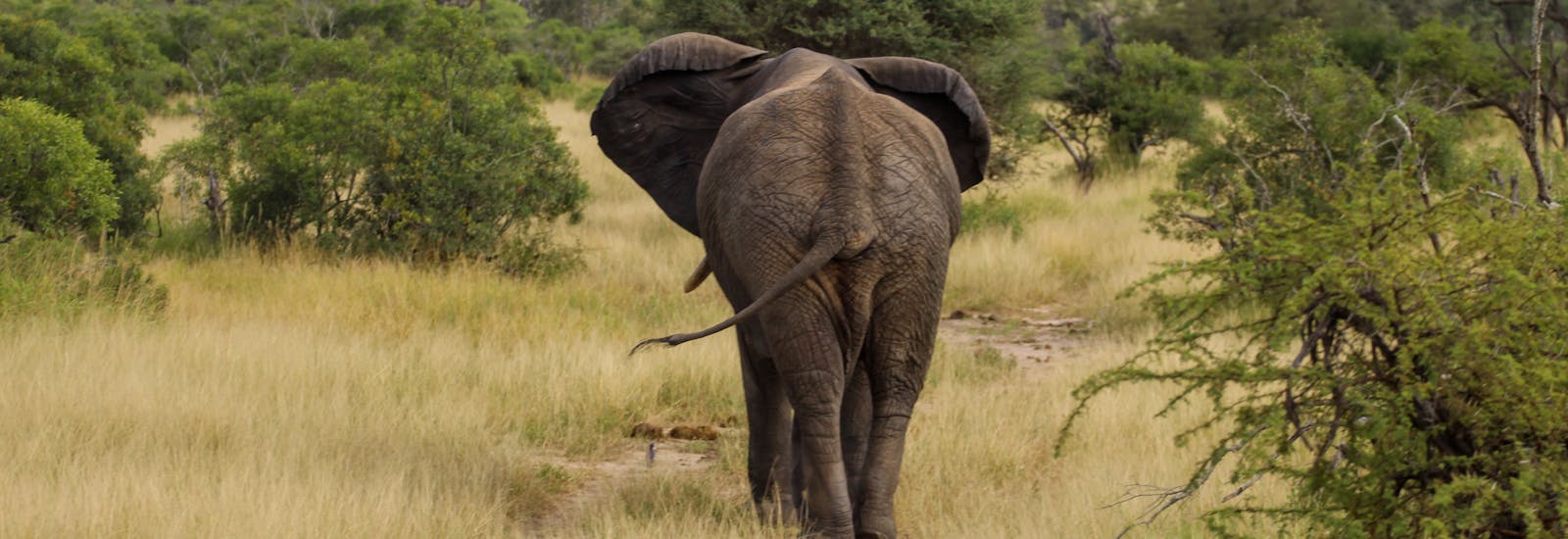
Collaring an elephant - a rare veterinary opportunity!
On Monday, 7th May, the students volunteering with the Shimongwe Wildlife Veterinary Experience had the fantastic opportunity to participate in darting and collaring a female elephant. Darting an animal of this size is a rare occurrence and quite an undertaking, so anyone going to all this effort must have a pretty good reason for it, right? The team definitely did, and their background story to darting "Leila" gives excellent insight into Africa's complex conservation world.
The Greater Mapungubwe Transfrontier Conservation Area (GMTFCA) covers approximately 30,0000 ha and is situated in the Central Limpopo River Valley. It is also home to about 1,237 elephants, according to a survey in 2012. As border fences have been removed recently to form the GMTFCA, elephants can move freely south into South Africa from Botswana and Zimbabwe. This increased human-wildlife conflicts with private owners, as their fences got damaged and the habitat destroyed due to confinement, and an elephant management plan for the area was put in place to help mitigate the conflict.
The central focus of this elephant management plan is to find out how to respond to the growing numbers of elephants, which means different aspects of elephant population dynamics need to be looked at, such as: 'What determines elephant home ranges and their movements? How do environmental factors influence their population structures and dictate their movements?'
Different ongoing research projects are tackling additional questions to cover as many aspects as possible to contribute and form an efficient elephant management plan.
Bundox Wildside, situated in the Mapungubwe Private Nature Reserve, a 28,000-ha reserve part of the GMTFCA, is involved with one of the research projects. This project's main objective is to investigate how the limitation of resources influences herd dynamics, mainly concerning the splitting and merging of herds, as this is a common observation, but no one knows why. 'Why do they split? Where does the split group go? When do they break? What are their stress levels like? Does it explain part of their destructive behaviour?'
To be able to answer these questions, a specific herd must be targeted to begin with. A satellite collar must be placed on one of the adult females to follow a herd. This requires a team of experts with Bundox and its volunteers' help.
So this is how the team went about it: first, the helicopter team spotted a large herd of elephants of more than 50 individuals. The dart containing the tranquillizer was shot from the helicopter by Mr Leif Rahmqvist, the proud owner of the reserve, targeting one of the adult females. As soon as the elephant was down, the ground team got to work under the supervision of the wildlife vet, Dr. Dewalt Keet, monitoring her vitals. The collar was applied, and necessary data was collected efficiently and successfully in no time, as the elephant was down for only 20 minutes.
In research articles, this elephant will be known as Vhembe 1, but to all of us, she will be known as Leila. Leila will be monitored closely for at least the following three years. She will contribute to the bigger picture, as do the two other collared elephants ranging in the whole GMTFCA today. There are plans to collar more elephants, as this information is of utmost importance for protecting and surviving one of Africa's last free-roaming populations of these magnificent giants.

